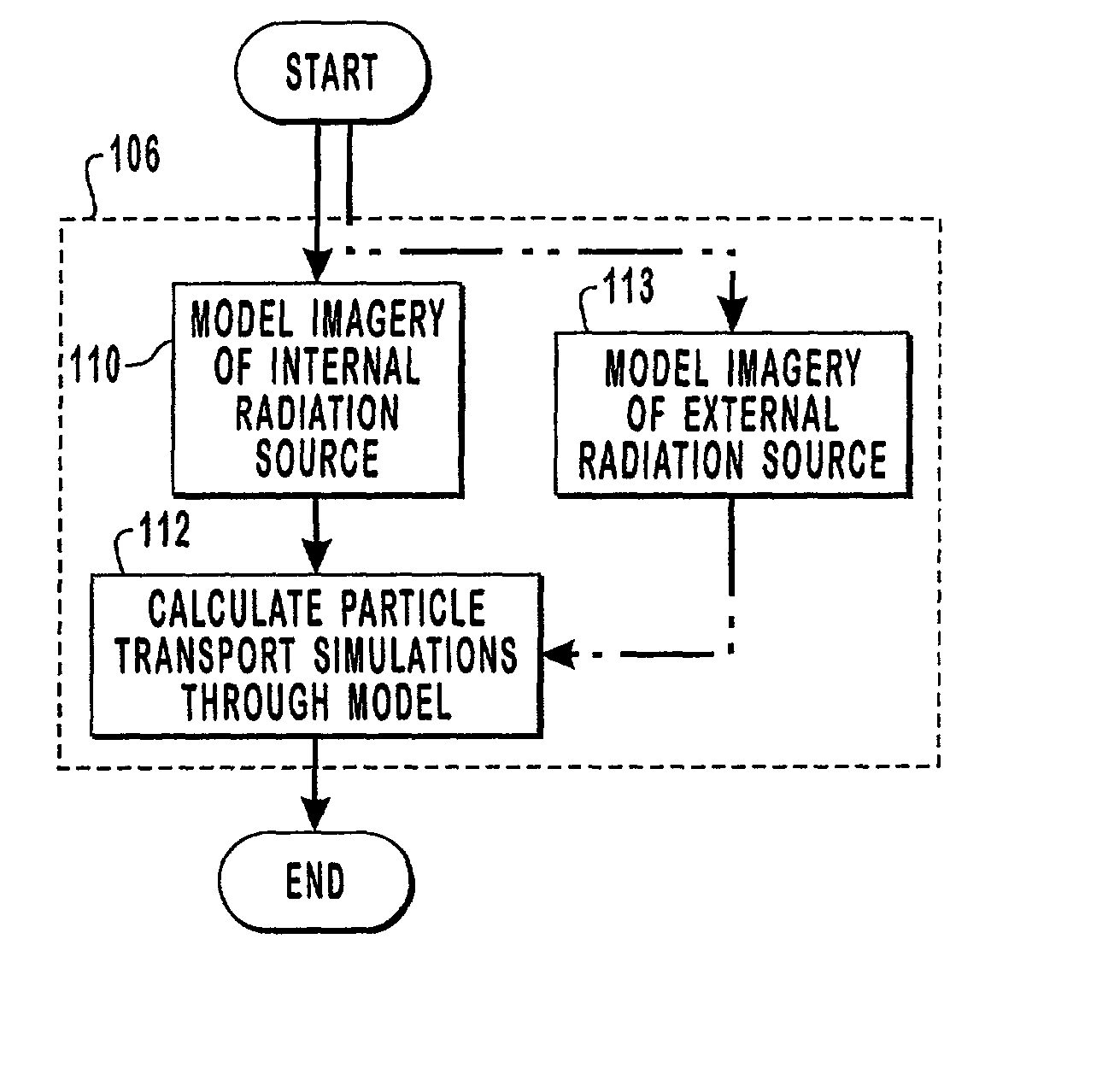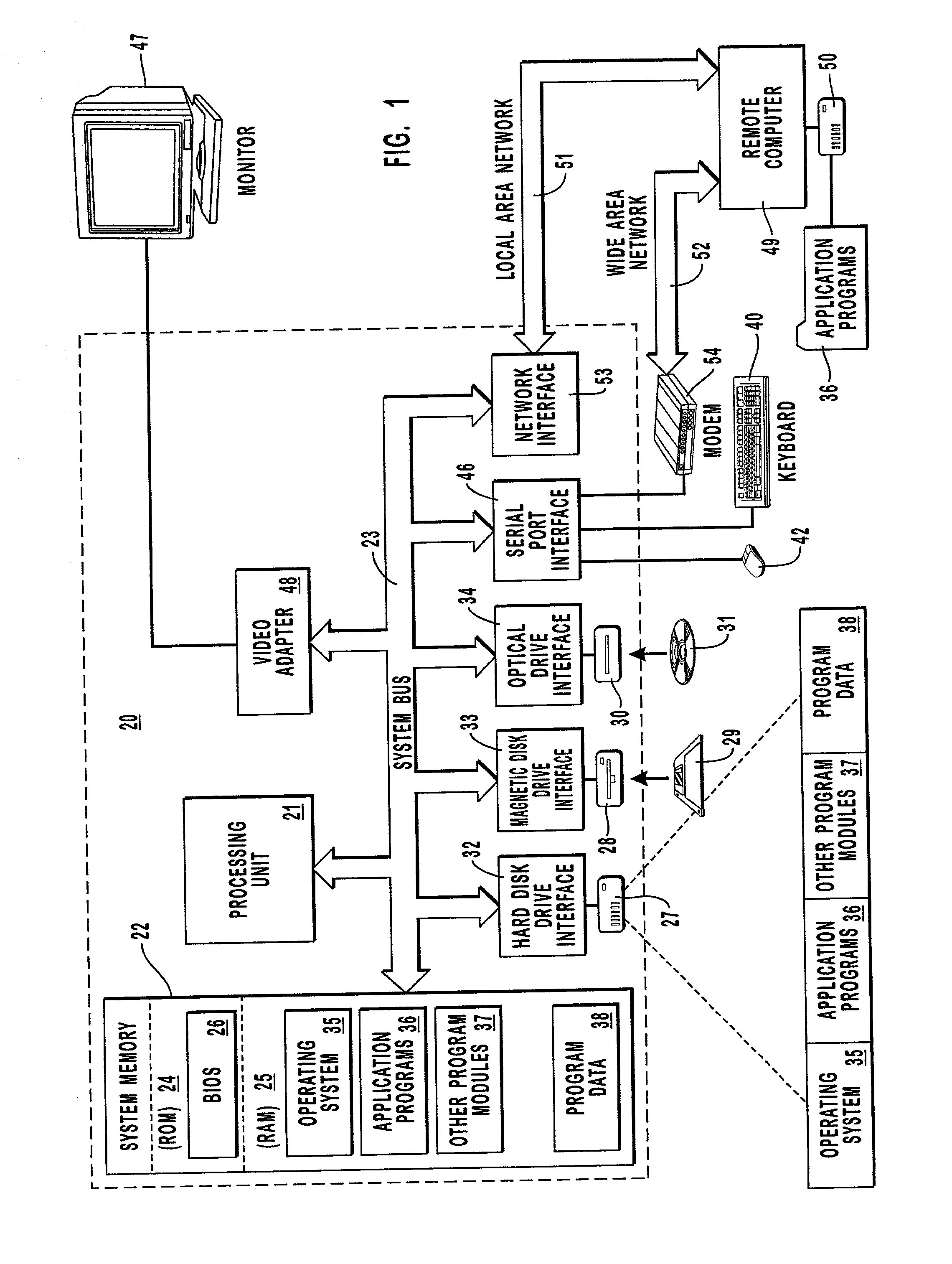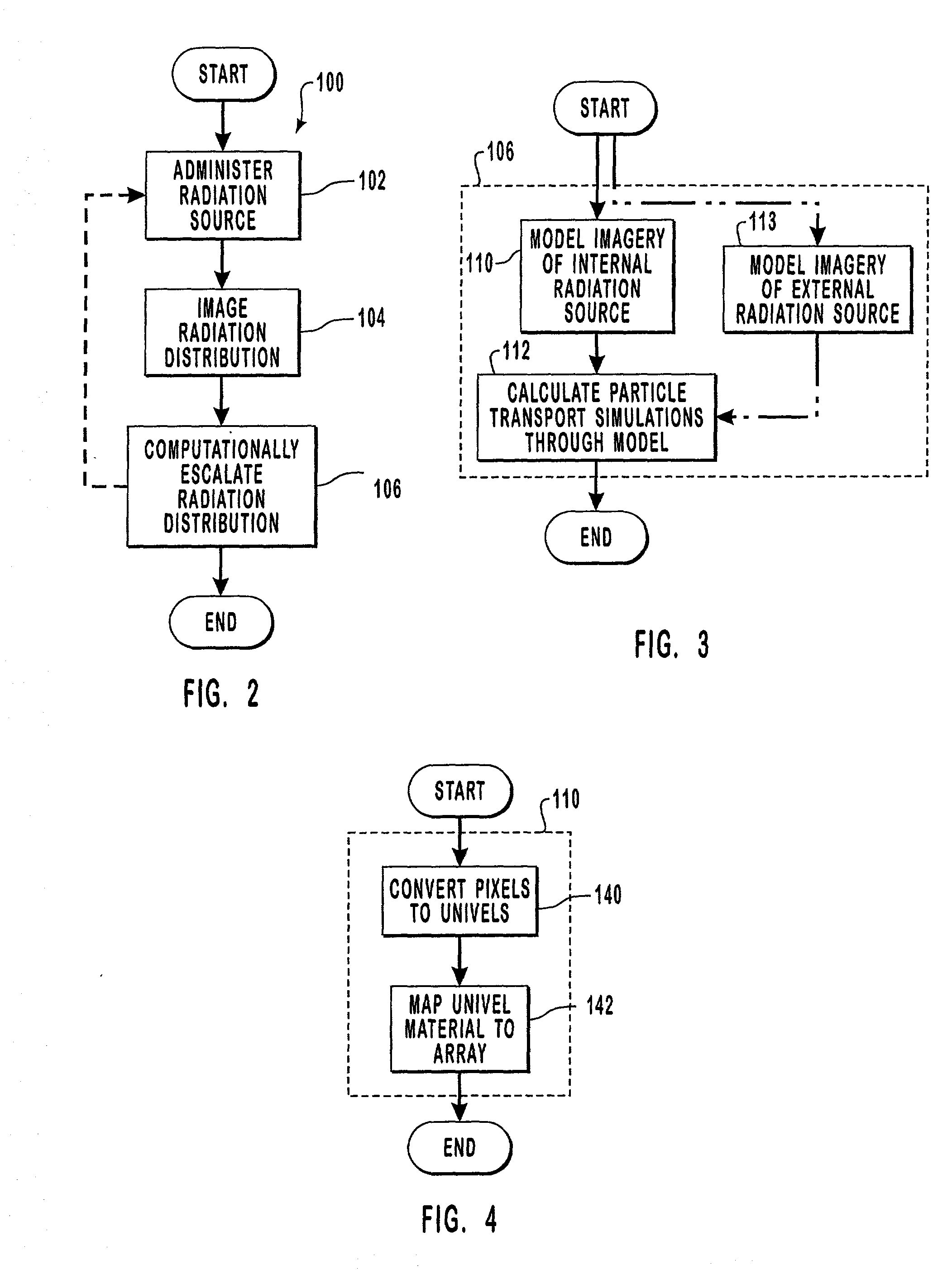Methods and computer readable medium for improved radiotherapy dosimetry planning
a technology of radiotherapy applied in the field of methods and computer readable medium for improving radiotherapy dosimetry planning, can solve the problems of limited geometric model generation, limited dosimetry planning for actual patients, and inaccuracy in modeling
- Summary
- Abstract
- Description
- Claims
- Application Information
AI Technical Summary
Benefits of technology
Problems solved by technology
Method used
Image
Examples
example 2
[0103] The following represents the actual algorithm information used to simulate such advanced particle transport along a particle track as presented at the 1998 Radiation Protection and Shielding Division Topical Conference in Nashville, Tenn. in April. Note that the subject matter of this presentation was directed only to external neutron sources.
[0104] Data Initialization
[0105] The uniformly spaced medical image data is read into an array. The x-pixel-size, y-pixel-size, and z-pixel size along with the minimum value of each coordinate is stored so conversions between world coordinates (WC) and normalized array coordinates (NAC) can be easily made. Here, the NAC simply corresponds to a location in the array of univels. For example, any location in the array can be found by an ordered triple of nonnegative integers, i.e., lookup (x,y,z)=array (z (width.times.length)+y (width)+.times.). A univel in WC is A mm.times.B mm.times.C mm. Whereas the univel in NAC is 1.times.1.times.1, fo...
example 3
[0112] The following data was presented at the 1998 conference in Nashville, Tenn. and is exemplary of a particle track having Y as a primary direction of movement, X is the secondary direction of movement increasing in 0.125 units of a Cartesian coordinate system and Z is the tertiary direction of movement increasing in 0.75 units. The initial starting position of the particle track after centering is x.sub.0=5.00, y.sub.0=1.5 and z.sub.0=10.125. Truncating (trunc) is the rounding down function. Stepping along the primary direction of movement yields the following data with an error term being an integer in the range of -32,768 to 32,767:
3 TABLE 2 x y z trunc(x) trunc(y) trunc(z) 5.000 1.5 10.125 5 1 10 5.125 2.5 10.875 5 2 10 5.250 3.5 11.625 5 3 11 5.375 4.5 12.375 5 4 12 5.500 5.5 13.125 5 5 13 5.625 6.5 13.875 5 6 13 5.750 7.5 14.625 5 7 14 5.875 8.5 15.375 5 8 15 6.000 9.5 16.125 6 9 16
[0113] The bulk of the corresponding stepping algorithm for this example is as follows:
PUM
 Login to View More
Login to View More Abstract
Description
Claims
Application Information
 Login to View More
Login to View More - R&D
- Intellectual Property
- Life Sciences
- Materials
- Tech Scout
- Unparalleled Data Quality
- Higher Quality Content
- 60% Fewer Hallucinations
Browse by: Latest US Patents, China's latest patents, Technical Efficacy Thesaurus, Application Domain, Technology Topic, Popular Technical Reports.
© 2025 PatSnap. All rights reserved.Legal|Privacy policy|Modern Slavery Act Transparency Statement|Sitemap|About US| Contact US: help@patsnap.com



